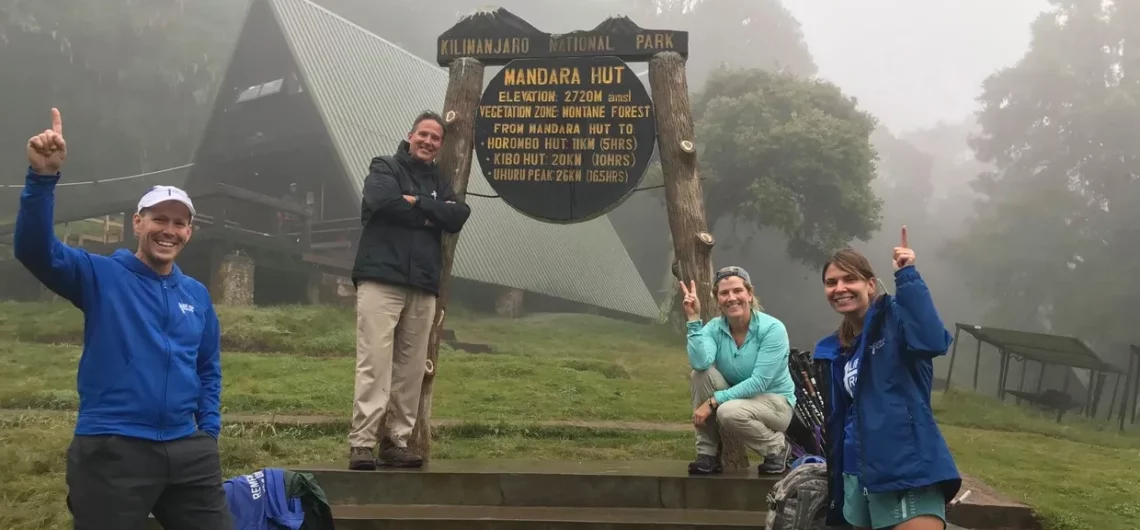The Marangu and Rongai routes are two popular options for climbing Mount Kilimanjaro in Tanzania that are far apart in differences in so many ways. While both routes lead to the summit, they differ in terms of scenery, difficulty, accommodation, and overall experience.
The Marangu route is known for its huts and diverse landscapes, while the Rongai route offers a quieter and more remote journey. The choice between the two routes depends on your preferences, level of fitness, and desire for solitude or more established infrastructure during the climb. R
There are two well-liked routes to climb Mount Kilimanjaro: Marangu and Rongai. Due to its popularity and varied sceneries, the Marangu route is frequently referred to as the “Coca-Cola” route. Huts are available for lodging, making it cozy but less difficult. The Rongai route, on the other hand, offers a more secluded and serene experience with camping facilities. It has less people and offers different mountain vistas. Depending on the tastes and fitness levels of the climbers, any path will take them to the summit. Regardless of the route used, reaching the top of Mount Kilimanjaro is an amazing feat.
- Marangu Route:
- Duration: Typically completed in 5 to 6 days.
- Popularity: Known as the “Coca-Cola” route due to its popularity and higher number of climbers.
- Accommodation: Offers sleeping huts along the route, providing more comfort and protection from the elements.
- Landscape: Passes through both rainforest and moorland zones, providing diverse scenery.
- Challenge: Considered to be less physically demanding compared to other routes, but the quick ascent can be challenging for some.
- Crowds: The route can be crowded during peak seasons.
- Rongai Route:
- Duration: Usually completed in 6 to 7 days.
- Remote and Tranquil: The Rongai route is less crowded, providing a more peaceful and remote experience.
- Accommodation: Involves tent camping, allowing closer connection with nature.
- Landscape: Begins on the northern side of the mountain, offering different perspectives and landscapes, including some arid sections.
- Challenge: Generally considered to be slightly less strenuous than the Marangu route, making it suitable for beginners.
- Wildlife: The route may offer opportunities to spot wildlife such as antelopes and birds.
Here are the main differences between the Marangu and Rongai routes:
- Scenery:
- Marangu Route: The Marangu route is often referred to as the “Coca-Cola” route because it is one of the more popular and frequently used paths. It is known for its diverse landscapes, including lush rainforests, moorlands, and alpine desert.
- Rongai Route: The Rongai route is less crowded and offers a more remote and tranquil experience. It approaches Kilimanjaro from the northern side, providing unique views of the mountain and the surrounding wilderness.
- Difficulty:
- Marangu Route: The Marangu route is considered one of the easier routes on Kilimanjaro. It has a more gradual ascent and well-maintained trails. The accommodation is in simple huts along the route, which can make it more comfortable but less challenging for some climbers.
- Rongai Route: The Rongai route is also considered a moderately challenging route, but it may be slightly more difficult due to its steeper sections. However, it provides a good opportunity for acclimatization and offers a sense of wilderness and isolation.
- Accommodation:
- Marangu Route: The Marangu route is the only route on Kilimanjaro that offers accommodation in huts. These huts have basic amenities such as bunk beds and communal dining areas, providing a more sheltered and cozy stay.
- Rongai Route: The Rongai route offers accommodation in tents throughout the trek. While it lacks the comfort of huts, it allows for a closer connection with nature and the surrounding environment.
- Crowds:
- Marangu Route: The Marangu route tends to be more crowded compared to some other routes, especially during peak seasons. This can be attributed to its popularity and the fact that it is the shortest route to the summit.
- Rongai Route: The Rongai route sees fewer climbers, making it a quieter and more secluded option. It is ideal for those seeking a more peaceful experience on the mountain.
- Summit Approach:
- Marangu Route: The Marangu route follows the same trail for the ascent and descent, which some climbers may find less appealing as it lacks variety.
- Rongai Route: The Rongai route employs a different trail for the descent, providing a more diverse and interesting experience during the climb.
See
![]()


Comments